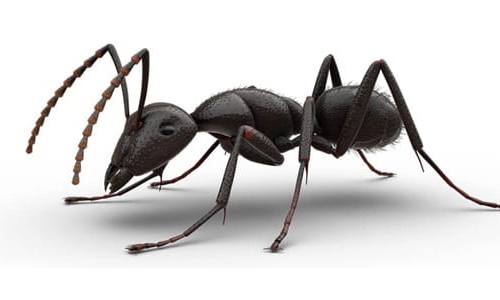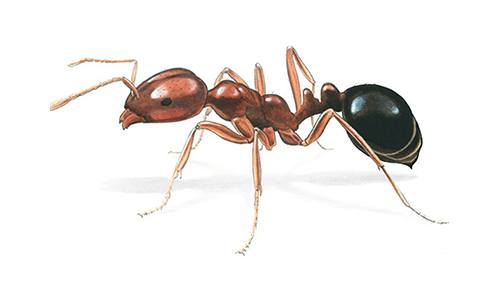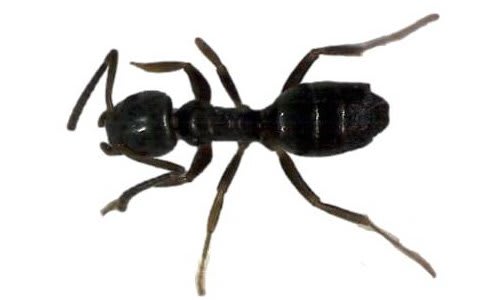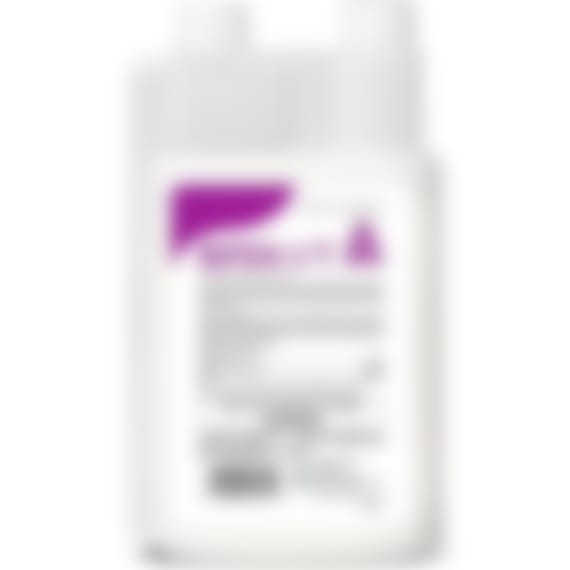
How to Get Rid of Ghost Ants
March 22, 2024
Ghost ants are sometimes referred to as black-headed ants or Florida Ghost ants. They are a significant ant in Florida due to the temperate climate and are prevalent in tropical and subtropical climates. They have a dark head and light body. You can see them on kitchen/bathroom sinks, floors, and counters. They can nest inside in wall voids, between and behind cabinets. They have a distinctive coconut-like odor when they are crushed.
Ant Identification Keys*
1- Node Ants: Black Carpenter Ants, Red Carpenter Ants, Field Ants, Small (False Honey Ants), Large Yellow Ants, Odorous House Ants
2-Node Ants: Thief Ants, Pharaoh Ants, Little Black Ants, Acrobat Ants, Pavement Ants, Big-Headed Ants
*These pdfs are courtesy of Univ of Nebraska, Cooperative Extension in Lancaster County
Ghost Ants look like tiny, white apparitions that suddenly appear and seem to disappear just as quickly. They are found both inside and outside. They may be found in kitchens and bathrooms as they are seeking moisture.
Workers are 1/16 inch/1.5 mm in length. The legs, pedicel, gaster, and antennae are pale, almost translucent, in color. The head and thorax are darker in color. For this reason, the Ghost Ant is also known in some areas as the Black-Headed Ant.

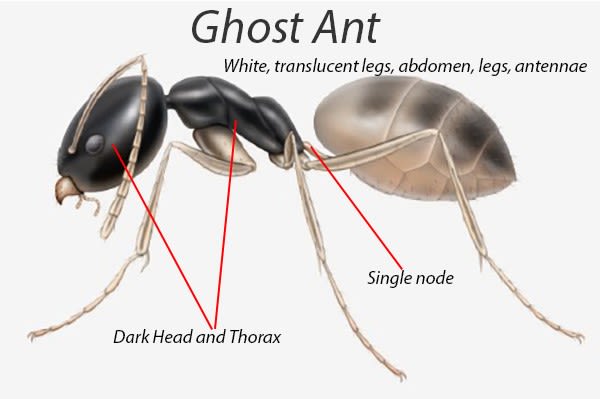
Many people confuse Pharaoh ants with the Ghost ants. However, the Pharaoh ant has 2 nodes on the pedicel. Ghost ants and "Florida Ghost ants" are the same.
Both Ghost ants and Odorous house ants are very small ants. The Ghost ant has a white, translucent abdomen, while the Odorous House Ant is brown to black all over.
The Ghost Ant is similar to the Odorous House Ant, but the Odorous House Ant is brown or black. Both the Ghost ant and Odorous ant smell like rotten coconuts when they are crushed.
Identify and Inspect Ghost Ants
Look for their trails and nests, both inside and outside. If you have an inside nest, the best control method is to bait. Typical sprays will scatter the colonies.
Outside Nesting Locations: Generally speaking, these ants like to nest outside under lumber, firewood piles, mulch, rocks, and loose bark of trees. These are places of decaying organic matter.
Inside Nesting Locations: If they are already inside, establishing a nest, look for voids or in-wall areas around moisture sources such as pipes, shower stalls, and sinks. Also, check potted plants.
You can find an excellent article by the University of Florida Extension Service can be found at Ant Trails: Baiting. It gives an overview of management with baits. They can enter homes by the foundation or from trees/plants that contact the building.
How to Get Rid of Ghost Ants
Recommended Ghost Ant Insecticides
Non-Repellents Outside: Unless you use an outside non-repellent spray, such as Navigator SC, baiting is the preferred ant control treatment. This non-repellent spray is non-detectable by ants, so they do not avoid them as typical sprays.
Typical insecticide sprays (repellent sprays) will only scatter the colonies, making the ant infestation larger. Non-repellent sprays kill the ants by contact and by transfer. The foraging ants track the insecticide back to the nest. They transfer the insecticide in the grooming process (themselves and each other).
Non-Repellent Inside: If you decide to spray inside, use a non-repellent spray called Phantom Aerosol II. Apply these aerosols with crack and crevice tips in tiny cracks and crevices.
Treating the nest Directly: If you can locate the nest outside. You can use a drench method to treat each nest. It would help if you got enough volume of finished solution to reach the entire colony. We suggest Bifen IT. Mix it 0.5 oz per gallon of water and use 1-2 gallons per mound area. Water down the area and pour the finish solution around a 4 ft diameter circle. Bifen IT is not a non-repellent insecticide.
Why Ant Bait?
-
The use of repellent residual sprays or dust stresses ant colonies, causing them to split into sub-colonies and scatter. This scattering (also called budding ) multiplies the number of ant colonies; multiplies your ant problem.
-
If you use a non-repellent insecticide, this budding will not occur.
-
Baiting is the most reliable way to eliminate the entire colony instead of spraying with a typical repellent residual spray. When choosing ant baits, it is best to choose from both sugar-based baits and protein/grease-based baits.
-
When you bait, use a slow-acting bait. Quick-kill insecticides and baits will only kill the foraging ants, not allowing those worker ants to take the bait back home to feed the queen, nest workers, and brood.
-
If the ant bait you are currently using is not sufficient (if the ants are not visiting the bait), you will need to change the bait.
-
Slow-acting baits provide a variety of the foods the ants find in nature. Examples are other insects (proteins/grease-based baits), nectar, aphid honeydew, and plant products (sugar and carbohydrates found in sweet-based baits). Choosing a bait
-
Requires an understanding of the nutritional needs of the colony. To be sure that you have all the baiting needs met, you may want to be ready with a sugar/carbohydrate-based bait, a grease/fat-based bait, and a protein-based bait.
-
Ghost Ants tend to forage in a random pattern, so that feeding trails may be more challenging to recognize. These Ants have a high need for water and may be commonly found in or around kitchens, baths, or other moisture sources.
-
IMPORTANT NOTE: REMOVE ALL OTHER FOOD COMPETITION WHEN BAITING AND LEAVE THE BAIT ALONE ONCE THE ANTS START FEEDING ON IT
Prevent Ghost Ants
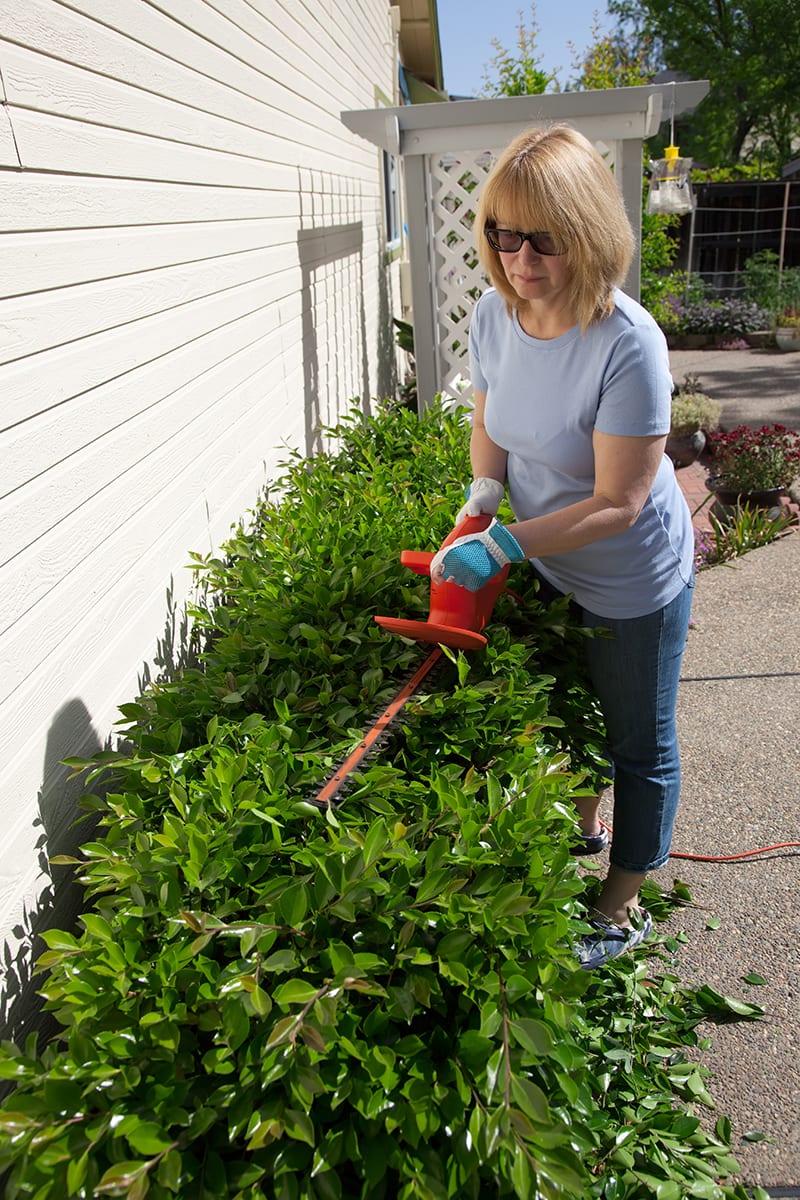
-
Look for ant trails leading into your home. If there is a crack or hole, seal them. Using caulk, seal as many gaps, holes, or cracks on your home's exterior as possible.
-
Ghost ants like to nest under moist decaying organic matter. Remove branches, logs, and leaves.
-
Since Ghost ants can be under stones and brick, remove them as far away from the house as possible.
-
Ghost ants will use shrubs or tree branches that touch your house as highways. Cut away any shrub or tree branch in contact with your home.
-
Eliminate moisture. Make sure any water hose/sprinkler does not spray directly to the foundation. Repair any leaky faucets or pipes.
Pro Ghost Ant Control Tips
If your ants are nesting outside but coming inside to forage for food, spray a non-repellent liquid residual insecticide like Taurus SC around the perimeter of your house and entry points.
If they are already nesting inside, use both a sweet-based ant bait like Optigard Ant Bait Gel or Advion Ant Bait Gel and a protein-based bait like Advion Ant Bait Arena or Advance 375A Ant Bait. These baits will mimic their natural hunt for sugary sources like honeydew or protein sources like dead insects.
When using baits, it is essential to remove any competing food sources like spills from cokes, honey, syrups, and greasy spots.
If you wish to spray inside, use a non-repellent aerosol like Spectre PS in any wall voids where they may be nesting. This spray will not contaminate any bait choices.
Ghost Ant Nests & Diet
Reproduction and Nesting
Ghost Ant colonies tend to be moderate-to-large in size with multiple queens. New colonies are started by budding. One or more reproductive females, several workers, and possibly some brood (larvae and pupae) migrate to a new nesting site. Their biology is similar to the Pharaoh Ant. They are very flexible and adaptable to nesting locations. Outside, they may be located under bark, bases of plant pots, under tufts of grass. Inside, they may be found in spaces between baseboards or cabinetry. There may be several subunits of Ghost Ant colonies with multiple queens.
Reproduction and Nesting
Ghost Ants will commonly eat both sweets and grease/ protein sources. They readily eat honeydew, honeydew-excreting insects, both alive and dead. They are a tropical ant but can be found in greenhouses in the northern states.
Get Rid of Ghost Ants with DIY Pest Control
Tackling ghost ants doesn't have to be a daunting task. With our carefully curated selection of highly effective ant control products, you're just a few steps away from a ghost ant-free home. Our solutions are designed to tackle your pest problem without compromise. Don't let ghost ants haunt your home any longer. Shop DIY Pest Control today!
Shop Ant Control ProductsHow To Get Rid of Ghost Ants
If you have an active infestation of Ghost Ants, follow this guideline for pro control tips to get rid of and kill Ghost Ants.
Ghost ants are sometimes referred to as black-headed ants or Florida Ghost ants. They are a significant ant in Florida due to their temperate climate and are prevalent in tropical and subtropical climates. They have a dark head and light body. You can see them on kitchen/bathroom sinks, floors, and counters. They can nest inside in wall voids, between and behind cabinets. They have a distinctive smell of coconut-like odor when they are crushed.
Ghost Ants look like tiny, white apparitions who suddenly appear and seem to disappear just as quickly. They are found both inside and outside. They may be found in kitchens and bathrooms as they are seeking moisture.
Workers are 1/16 inch/1.5 mm in length. The legs, pedicel, gaster, and antennae are pale, almost translucent, in color. The head and thorax are darker in color. For this reason, the Ghost Ant is also known in some areas as the Black-Headed Ant.
Many people confuse Pharoah ants the Ghost ants. However the Pharoah ant has 2 nodes on the pedicel. Ghost ants and "Florida Ghost ants" are the same
Both Ghost ants and Odorous house ants are very small ants. The Ghost ant has a white, translucent abdomen, while the Odorous House Ant is brown to black all over.
The Ghost Ant is similar to the Odorous House Ant, but the Odorous House Ant is brown or black. Both the Ghost ant and Odorous ant smell like rotten coconuts when they are crushed.
- 1- Node Ants: Black Carpenter Ants, Red Carpenter Ants, Field Ants, Small (False Honey Ants), Large Yellow Ants, Odorous House Ants
- 2-Node Ants :Thief Ants, Pharaoh Ants, Little Black Ants, Acrobat Ants, Pavement Ants, Big-Headed Ants
*These pdfs are courtesy of Univ of Nebraska, Cooperative Extension in Lancaster County
Ant Trails and Inspection
Inspect
- Look for their trails and nests, both inside and outside. If you have an inside nest, the best control method is to bait. Typical sprays will scatter the colonies.
- Outside Nesting Locations: Generally speaking, these ants like to nest outside under lumber, firewood piles, mulch, rocks, loose bark of trees. These are places of decaying organic matter.
- Inside Nesting Locations: If they are already inside, establishing a nest, look for void or in-wall areas around moisture sources such as pipes, shower stalls, and sinks. Also, check potted plants.
- You can find an excellent article by the University of Florida Extension Service can be found at Ant Trails: Baiting. It gives an overview of management with baits. They can enter homes by the foundation or from trees/plants that contact the building.
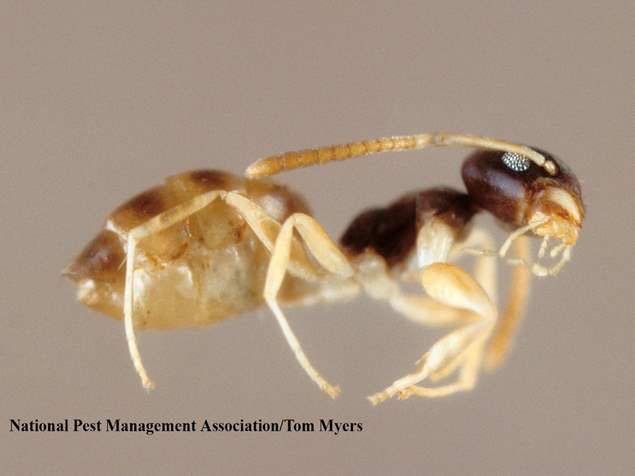

Identify and Inspect Ghost Ants
How to Get Rid of Ghost Ants
Non-Repellent Insecticides ( Ants will not avoid treated areas ).
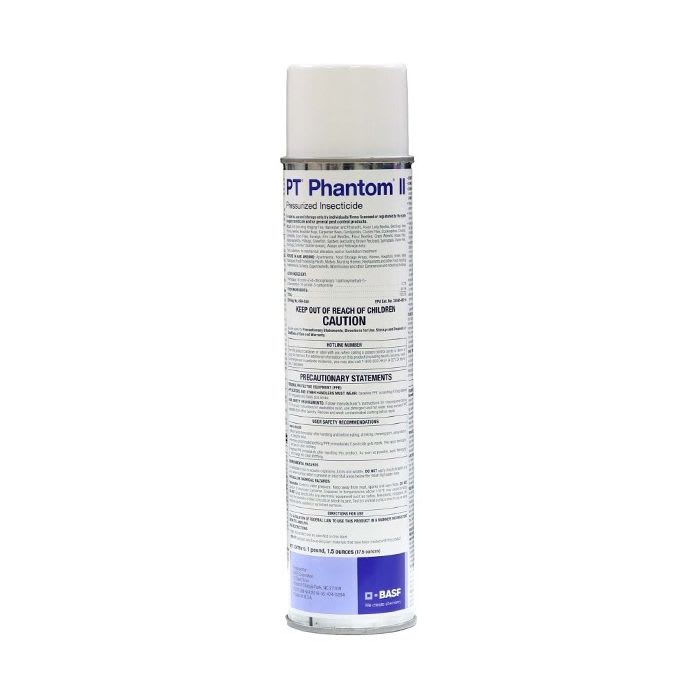
Phantom Aerosol II is a non-repellent aerosol and will not scatter the ant population. It is ready-to-use with a straw tip to reach into areas where ants are hiding. It will work with any baits, and not contaminate them. Phantom Aerosol II is long-lasting and will dry clear.
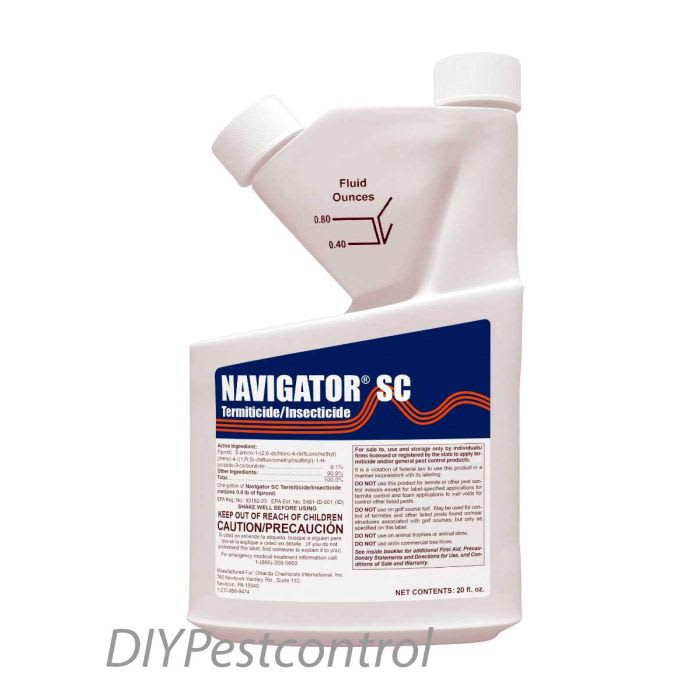
Navigator SC 20 oz yields 25 gallons, and the 78 oz yields 100 gallons. Mix Navigator SC at 0.8 oz per gallon of water and spray a low volume spray up to 18 inches out and 18 inches up the perimeter of your home as a banded spray. Spray around windows, doors, pipes, vents, foundation, foundation cracks, drilled holes, or any exterior openings where the ants may enter the home. Treat where wires (cable, telephone, electrical) enter the house.
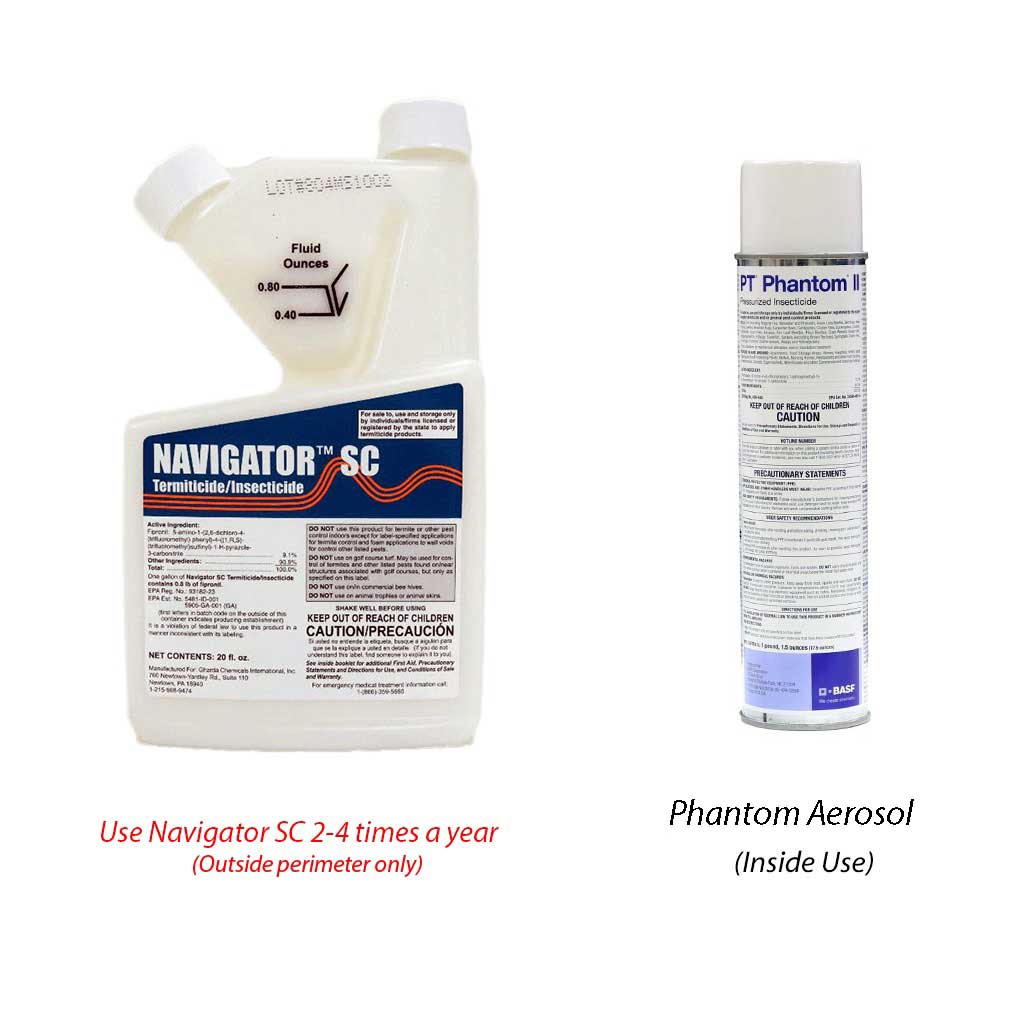
Use the Non-Repellent Ant Kit to treat ants inside and outside with the non-repellent insecticides, Navigator SC and Phantom Aerosol II Aerosol. Using a pest control method with non-repellent insecticides for ant control is superior over repellent insecticides because the ants can not detect its presence. If ants can detect an insecticide, they will choose to go around it and enter the structure in another manner. With non-repellent insecticides, the ants go thru the chemicals without avoiding it. As the ants go thru the Navigator SC and Phantom Aerosol II , the foraging ants are covered with the insecticide, taking it back to the nest to share with other ants.
Recommended Insecticides
Non-Repellents Outside: Unless you use an outside non-repellent spray, such as Navigator SC , baiting is the preferred ant control treatment. This non-repellent spray is non-detectable by ants, so they do not avoid them as typical sprays.
Typical insecticide sprays (repellent sprays) will only scatter the colonies, making the ant infestation larger. Non-repellent sprays kill the ants by contact and by transfer. The foraging ants track the insecticide back to the nest. They transfer the insecticide in the grooming process (themselves and each other).
Non-Repellent Inside: If you decide to spray inside, use a non-repellent spray called Phantom Aerosol II Aerosol. Apply these aerosols, with crack and crevice tips applied in tiny cracks and crevices.
Treating the nest Directly: If you can locate the nest outside. You can use a drench method of treating each nest. It would help if you got enough volume of finished solution to reach the entire colony. We suggest Bifen IT. Mix it 0.5 oz per gallon of water and use 1-2 gallons per mound area. Water down the area and pour the finish solution around a 4 ft diameter circle. Bifen IT is not a non-repellent insecticide.
Bifen IT Insecticide
Bifen IT with Bifenthrin 7.9% is a flowable multi-purpose insecticide. Bifen IT has a long residual control with a product label of over 75 insects. This broad label on Bifen IT includes turf and ornamental applications, food handling applications, indoor and outdoor applications, and termite treatments. Bifen IT is a synthetic pyrethroid and a low odor chemical.
Advance 375A Ant Bait is a ready-to-use product for use in controlling Carpenter Ants, Fire Ants, Pharoah Ants, Odorous Ants, House Ants and other ants both indoors and outdoors. It is used for protein/grease feeding cycles; granulated 8 oz and 2 lb containers.
Advion Ant Bait Arena by Syngenta, uses the same active ingredient indoxacarb, as Advion Ant Bait Gel. Indoxacarb is a slow-acting poison that allows enough time for foraging ants to go back to their ant nests and contaminate other colony ants including larvae and queens. This would destroy the whole colony.
Advion Ant Bait Gel is a highly attractive for Ghost Ants, seeking moisture or sweets. This bait has a delayed action kill, and it exposes the entire colony to the bait. It retains its integrity over a while.
Use Optigard Ant Bait Gel for sugar feeding cycles excludes Fire, Harvester, and Pharaoh ants. The powerful, slow-acting non-repellent active ingredient, thiamethoxam in Optigard Ant Gel knocks out workers, brood, and queens.
Advion Ant Bait Kit combines Advion Ant Bait Gel and Advion Ant Bait Arena for a choice of both sweet-based and protein-based ant baits.
Why Ant Bait ?
- The use of repellent residual sprays or dust stresses ant colonies, causing them to split into sub-colonies and scatter. This scattering (also called budding ) multiplies the number of ant colonies; multiplies your ant problem.
- If you use a non-repellent insecticide, this budding will not occur.
- Baiting is the most reliable way to eliminate the entire colony instead of spraying with a typical repellent residual spray. When choosing ant baits, it is best to choose from both sugar-based baits and protein/grease-based baits.
- When you bait, use a slow-acting bait. Quick-kill insecticides and baits will only kill the foraging ants, not allowing those worker ants to take the bait back home to feed the queen, nest workers, and brood.
- If the ant bait you are currently using is not sufficient (if the ants are not visiting the bait), you will need to change the bait.
- Slow-acting baits provide a variety of the foods the ants find in nature. Examples are other insects (proteins/grease-based baits), nectar, aphid honeydew, and plant products (sugar and carbohydrates found in sweet-based baits). Choosing a bait
- requires an understanding of the nutritional needs of the colony. To be sure that you have all the baiting needs met, you may want to be ready with a sugar/carbohydrate-based bait, a grease/fat-based bait, and a protein-based bait.
- Ghost Ants tend to forage in a random pattern, so that feeding trails may be more challenging to recognize. These Ants have a high need for water and maybe commonly found in or around kitchens, baths, or other moisture sources.
- IMPORTANT NOTE: REMOVE ALL OTHER FOOD COMPETITION WHEN BAITING AND LEAVE THE BAIT ALONE ONCE THE ANTS START FEEDING ON IT
Recommended Ant Baits (Sweet and Protein/Grease Feeding Cycles)
Prevent Ghost Ants

-
Look for ant trails leading into your home. If there is a crack or hole, seal them. Using caulk, seal as many gaps, holes, or cracks on your home's exterior as possible.
-
Ghost ants like to nest under a moist decaying organic matter. Remove branches, logs, and leaves.
-
Since Ghost ants can be under stones and brick, remove them as far away from the house if possible.
-
Ghost ants will use shrub or tree branches touching your house as highways. Cutaway any shrub or tree branch that is in those locations.
-
Eliminate moisture. Make sure any water hose/sprinkler does not spray directly to the foundation. Repair any leaky faucet or pipes.
Ghost Ant Control-Pro Tips
- If your ants are nesting outside but coming inside to forage for food, spray a non-repellent liquid residual insecticide like Taurus SC around the perimeter of your house and entry points.
- If they are already nesting inside, use both a sweet-based ant bait like Optigard Ant Bait Gel or Advion Ant Bait Gel and a protein-based bait like Advion Ant Bait Arena or Advance 375A Ant Bait. These baits will mimic their natural hunt for sugary sources like honeydew or protein sources like dead insects.
- When using baits, it is essential to remove any competing food sources like spills from cokes, honey, syrups, and greasy spots.
- If you wish to spray inside, use a non-repellent aerosol like Spectre PS in any wall voids where they may be nesting. This spray will not contaminate any bait choices.
Ghost Ant Nests and Diet
Reproduction and Nesting
Ghost Ant colonies tend to be moderate-to-large in size with multiple queens. New colonies are started by budding. One or more reproductive females, several workers, and possibly some brood (larvae and pupae) migrate to a new nesting site. Their biology is similar to the Pharaoh Ant. They are very flexible and adaptable to nesting locations. Outside, they may be located under bark, bases of plant pots, under tufts of grass. Inside, they may be found in spaces between baseboards or cabinetry. There may be several subunits of Ghost Ant colonies, with multiple queens.
Diet and Distribution
Ghost Ants will commonly eat both sweets and grease/ protein sources. They readily eat honeydew, honeydew-excreting insects, both alive and dead. They are a tropical ant but can be found in greenhouses in the northern states.
Written by our resident pest control expert Ken Martin.






